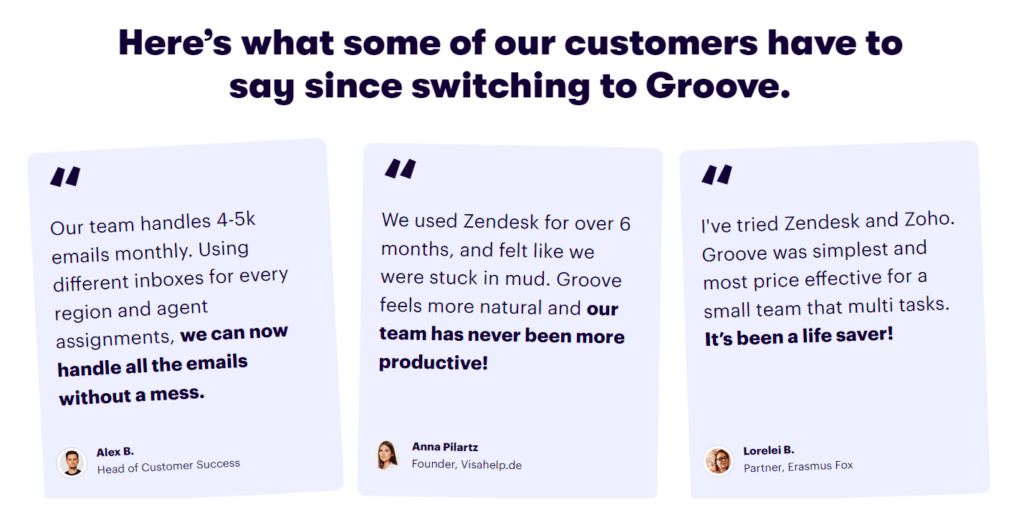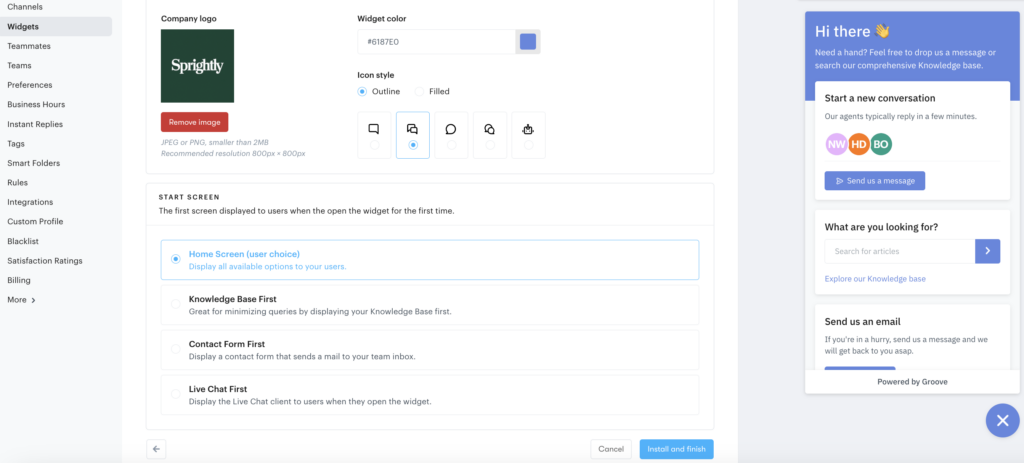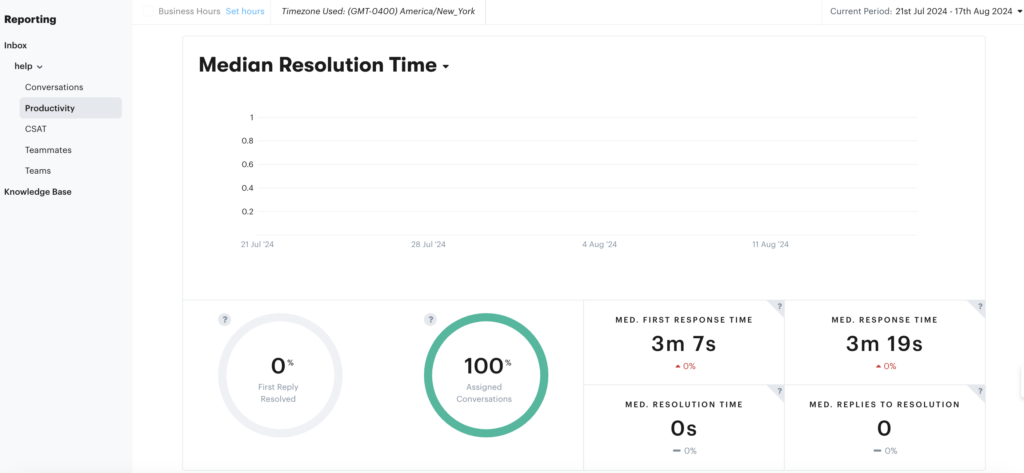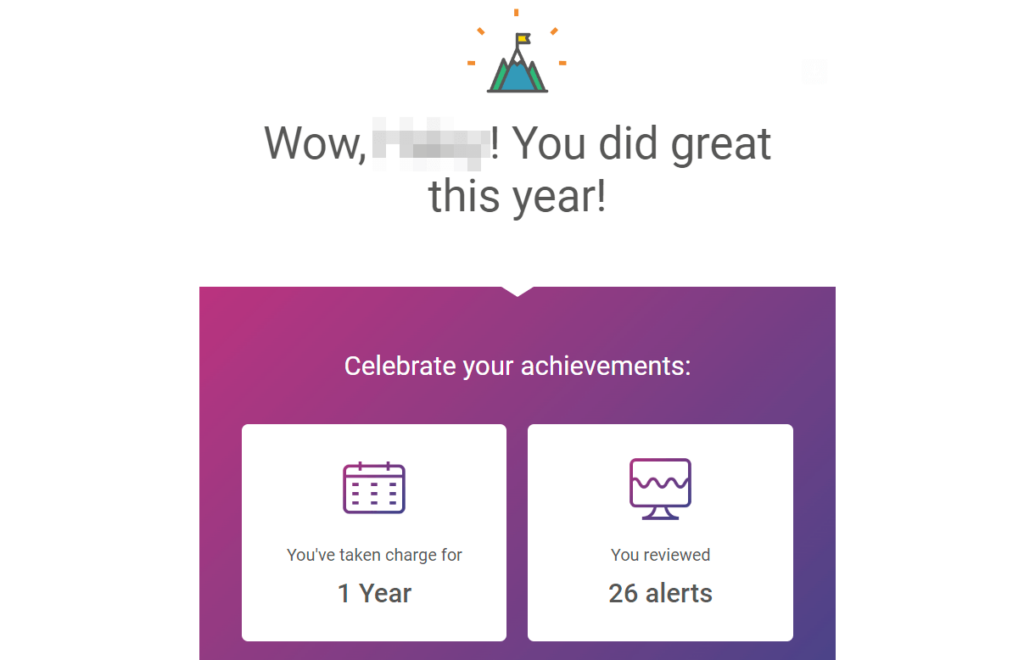Think about the last frustrating, hair-pulling experience you had when dealing with customer support. Maybe you needed to return a product, or troubleshoot a technical issue.
While it may have been an isolated incident, chances are you came away feeling pretty negative about the business in question. It’s even possible you debated changing providers, or gave up on using a particular product feature because the tech support was too much of a headache.
Businesses aren’t infallible, but many of the things that cause customers to churn can be prevented. A lot of it comes down to the long-term user experience you provide.
To understand how to keep customers coming back, you’ll need to learn how to offer real, tangible value. Fortunately, it doesn’t take a lot of resources or special knowledge to do that. Here are our top suggestions!
1. Deliver Prompt, Comprehensive, and High-Quality Customer Support
The first thing you’ll need to evaluate is your customer support. Once a customer has bought your product or service, the most common interaction they’ll have with your business (besides further purchases) is asking for help.
Subpar service is the quickest way to drive a customer off. Even if they’re happy with what they’ve bought, they’re not going to stick around if you make it hard to get support. They’ll find somewhere else to get a similar product, from a company that values their business.
So if you’re wondering how to keep customers coming back, providing consistent, reliable, and excellent customer service is the key. There’s a lot involved in doing that correctly, and we’ve written about how to get started elsewhere, so we won’t retread too much ground here.
But the first step is providing your support team with a tool that enables them to deliver better customer support – and saves them time. That’s where a helpdesk like Groove comes in.
Setting Your Customer Service Team Up for Success
A helpdesk acts as a centralized location for all customer communications. It pulls inquiries from different channels (including email and social media), and collects them all in one place as service tickets. This way, your team can effectively collaborate, use automation to cut down on their workload, and assign tasks to the best teammate for each job.
However, it’s important to choose the right helpdesk. In our experience, many of the popular tools are effective, but also not designed to meet the needs of small businesses. They can be overcomplicated, expensive, confusing, hard to set up, or all of the above.
That’s why we created Groove. It’s an all-in-one platform that provides key features, while also streamlining and simplifying your workflows.

It’s extremely approachable, works with your existing Gmail/Outlook support addresses, and can be set up in minutes. No unnecessary bells and whistles – just the functionality you really with an affordable, scalable pricing structure.
Of course, we’re biased! Below, we’ll give you a preview of how Groove can help you retain customers. But don’t take our word for it – check out a free trial and see if it’s the right fit for your business’ needs.
Streamlining Support with a Shared Inbox and Omnichannel Experience
Groove’s shared inbox lets you route as many support emails as you like to the same place. This ensures more timely responses, which are a major driver of customer satisfaction. Compare this to a standard email platform like Gmail or Outlook, where issues are more likely to slip through the cracks.
Plus, this centralization goes beyond email. You can respond to inquiries in Groove whether they come from Facebook, a phone call, or in-app live chat. Cross-channel communication allows customers to reach out however they like and get the same level of service.

A shared inbox also enables proactive collaboration. You can work on tickets together with teammates, leave internal notes, and assign conversations to the right people.
Enabling Self-Service with a Comprehensive Knowledge Base
A self-service knowledge base is a powerful part of your customer experience toolkit. With Groove, you can build a comprehensive knowledge base where buyers easily find answers to common questions.

It’s a great resource for the onboarding process (which we’ll talk more about soon), and for customers who like to solve problems on their own. You can cut down on service tickets and provide answers even when no one is on the clock.
Once it’s set up via Groove, you can even integrate your knowledge base into other components of your website and customer support process. For example, with Olark you can share knowledge base articles during live chat conversations, to point customers in the right direction.
Offering Immediate Resolution with Live Chat
A live chat widget is a powerful tool that integrates into your website or app to enable real-time communication. It might connect to a support team member or an AI chatbot (or some combination).
No one wants to be kept waiting, especially when they’re having a problem. Real-time assistance curbs customer frustration, and turns negative experiences into positive ones in the shortest span of time.
Groove’s live chat feature enables you to offer instant support without any technical know-how or a complex setup process. You can address customer concerns ASAP, which is essential for keeping them around long-term.

The smart routing features can un-assign messages and conversations when agents go idle, and re-route them to available team members instead. AI can also let customers know when you’re away, and grab their emails and other key details so you can help them as soon as you’re back.
Collecting Feedback and Building Stronger Relationships
Gathering customer feedback is essential for understanding your customers’ needs. Poor service results in higher churn and reduced retention. But what if you don’t understand what’s going wrong?
Groove’s reporting tools help you collect and analyze feedback, so you can make data-driven decisions to enhance customer satisfaction and retention. This data can show you where customers are experiencing friction. You can even ask them directly via customer satisfaction surveys.

Let’s wrap up with a few more ways Groove helps you learn how to keep customers coming back:
- Personalized communication. You can use Groove to segment your customers and tailor your communications based on their preferences and behaviors. Personalized interactions, from welcome messages to milestone celebrations, make buyers feel valued and understood, fostering loyalty that lasts. We’ll explore how to do this in the following sections.
- Proactive engagement. You’ll be able to set up proactive engagement strategies, such as automated onboarding emails and personalized update announcements. These keep customers informed and engaged with your brand.
2. Create Individual, Personalized Relationships
Small businesses lack the financial resources and robust staff that larger corporations have. Understandably, you may feel like you can’t compete against your biggest competitors.
While you probably won’t beat those competitors in sheer numbers, you can foster much stronger relationships with the buyers you do have. Improving lifetime value matters a lot when your customer pool is small, and one of the best ways to do that is by offering personalized support.
Your primary advantage is the degree to which you can know your customers. Amazon, for example, can never meet its customers at an individual level. It can’t provide personalized support or onboarding.
However, as a smaller business you can do those things, when dealing with customers in the hundreds versus the millions. So how can you personalize the customer experience?
Researching Customer Needs
Each buyer is an individual. What one customer might need or expect from your business will differ from another. We recommend researching your audience demographics, so you can get to better know your buyers and tailor your services accordingly.
For example, if you offer SaaS and have a technically inexperienced audience, you’ll want to provide very clear onboarding that’s free of jargon. Alternately, you might find that buyers fall into a few categories based on their levels of technical know-how, and you can create unique resources and support options for each.
You can research needs based on demographics, psychographics, purchase history, and feedback. What matters is to understand their pain points in as much detail as possible, and devise a plan for how your products can solve their problems.
Understanding Your Customers’ Journey
Knowing how potential customers move through their unique customer journeys is vital for securing conversions. But it’s just as important after the first sale is made. To understand how to keep customers coming back, you’ll need to know what their post-purchase interactions with your business look like.
If you haven’t already, we highly recommend building customer journey maps. In brief, the customer journey is the process by which a buyer moves from brand awareness through to purchase and then into loyalty/retention.
Your map should represent that process, so you can better understand your users and the touchpoints where they experience friction. When mapping the post-purchase stage of the customer journey, you’ll be digging into metrics like:
- Customer churn rates
- Retention rates
- Customer satisfaction scores (CSAT)
- Net promoter scores (NPS)
- New feature adoption rates
How does this relate to personalization? Well, it’s important to have more than one map. Just as customers find out about your products through different means, they have different long-term experiences with your business.
For instance, a buyer who has opted for a low-tier plan will go through a different journey than a customer who shelled out for top-tier access. Each has their own needs, experiences your product differently, and encounters unique challenges.
So when you’re evaluating metrics and refining your customer journey maps, look for categories of engagement. Segment users based on their purchases, actions, requests, and so on. Then seek to understand and provide for each segment’s unique needs.
If you’re not sure how to do that, the best way is usually to ask them! Surveys are great for learning about your current customers, and if they’re not happy about something, they’ll tell you.
3. Go Above and Beyond for Customers With Post-Purchase Communication
Providing quality support when customers reach out for help is vital. But you don’t have to wait for them to get in touch. The more proactive you are with communication, the more you show that you care whether they stick around.
Post-purchase communication encourages buyers to feel good about their purchasing decisions. It also strengthens your relationship with them, and builds brand loyalty.
Most importantly, it can identify and resolve issues upfront. Not all customers who have trouble using your product will reach out about it. They may try for a few days, then give up and cancel their subscription or request a refund.
But if you make contact during that crucial early stage, they’re more likely to ask for help. It’s a win-win – you show that you’re attentive and resolve their problem, and they have no reason to look elsewhere.
Creating a Post-Purchase Check-In Plan
There are plenty of post-purchase communication options, including email, chat, and phone calls. What you opt for should be based on your customers’ preferences, and the complexity of their needs.
What should the communication actually look like? It’s best to keep things simple at first. Here are a few options:
- Schedule follow-up emails or calls. You can schedule automated emails or calls at key intervals after purchases are made, to ask about their experiences and offer assistance if needed.
- For example: “Hi [Customer Name], how are you enjoying your new [Product]? We’re here to help if you need any tips or support!”
- Share relevant customer testimonials. Send stories of similar customers who have benefited from your product or service. This reinforces the value of their purchase and builds confidence. Plus, it provides a framework and showcases successful use cases.
- Offer personalized usage tips. Based on the customer’s purchase, you might send tailored advice on how to get the most out of what they’ve bought. You can create a series of how-to emails or videos specific to their needs.
- Reiterate guarantees and support options. Now is a good time to remind customers of your satisfaction guarantee or return policy. You can also provide clear information on how to access customer support.
- Continue sending proactive check-ins. Don’t stop with one check-in! Reach out at strategic points in the customer journey to ensure that everything is still going well. You can also use these opportunities to gather more feedback and address new issues promptly.
Finally, consider creating a systematic approach to post-purchase communication, so you know these check-ins will happen in a timely manner. To do that, you can start by mapping out key touchpoints in the customer journey where reassurance might be needed. Then develop a content calendar for follow-up messages, and use your helpdesk to schedule automated emails and reminders.
4. Guide Customers Through a Clear Onboarding Processes
For many businesses, a well-designed onboarding process is essential. It’s a key element of successful customer retention strategies, especially for the SaaS industry.

You’ll want to help customers get the most out of your products or services right from the start. This builds trust, reduces frustration, and sets the foundation for a long-term relationship that turns new buyers into loyal customers.
Customers often have questions or uncertainties when they start using a new product or service. As we’ve mentioned already, you have to anticipate these needs and provide proactive guidance. When you put everything they need right at their fingertips, you enhance their experience and increase the chance that they’ll stick around.

Here are a few good places to start:
- Create checklists and visual maps. Develop step-by-step checklists that outline the key actions customers need to take to get started. You can use visual maps or flowcharts to illustrate the customer journey and highlight important touchpoints.
- Point them towards key resources. Don’t assume customers will go out of their way to find documentation and support channels. Give them all the links they’ll need upfront, so they never have to wonder where to get help.
- Send educational emails. Design a series of onboarding emails that provide helpful tips, video tutorials, and best practices. Don’t forget to tailor the content to different customer segments based on their specific needs and usage patterns.
- Develop a comprehensive knowledge base. You can address common questions and concerns with a detailed Frequently Asked Questions (FAQ) or quick-start guides. Even better, you can develop a full knowledge base with organization that guides new users to the information they want.
5. Celebrate Customer Successes and Acknowledge Milestones
So far, we’ve talked a lot about how to avoid problems and help buyers who are struggling. What about customers who don’t need help, at least not right away? Sending some attention their way is still key for turning satisfied buyers into loyal, long-term users.
Recognizing and celebrating your customers’ achievements is a powerful way to deepen relationships and encourage repeat business. It’s one of the most effective, yet often overlooked, customer retention strategies.
When you acknowledge their milestones, you show that you value their journeys and are invested in their success. It also reinforces their decision to choose your brand.

Plus, this doesn’t have to be complex. You can offer:
- Personalized notes. Send handwritten or personalized digital notes to congratulate customers on their achievements. You can mention specific details about their journeys to make your messages more meaningful.
- Small gifts. Offer tokens of appreciation, such as discounts, branded merchandise, or free samples, to celebrate their success or recognize how long they’ve been a customer. If possible, ensure that the gift aligns with their interests.
- Social media shout-outs. Publicly acknowledge customer milestones on your social media platforms.
To effectively celebrate milestones, though, you’ll also need to establish a system for tracking customer goals and triggering recognitions. You can achieve that via:
- Customer profiles. Maintain detailed profiles that include information about each customer’s goals, preferences, and key milestones.
- Celebration calendar. Develop a calendar of customer milestones to plan and execute celebrations consistently.
- Automated alerts. With Groove, you can set up alerts for significant customer achievements, ensuring timely recognition. You can even pre-schedule messages to save your support team time.
6. Convert Loyal Customers into Brand Ambassadors
Turning satisfied customers into brand ambassadors is challenging, but hugely beneficial. It both attracts new business and deepens the loyalty of your existing customers.
When buyers become brand ambassadors, they develop a deeper sense of belonging and pride in their association with your business. They should feel more invested in your success, which enhances their loyalty far beyond a typical transaction.
Also, actively promoting your brand keeps customers engaged with your products and services. This reminds them of the value you provide, especially if your product or service isn’t something they use every day.
All of this increased engagement naturally leads to stronger, more loyal customers. Plus, the new buyers they bring in should start with higher levels of trust, thanks to the powerful effects of social proof.
Of course, most buyers never reach this tier of commitment and investment. To increase the number of those who do, you can:
- Exceed expectations. Consistently deliver exceptional customer experiences that inspire customers to share their positive stories. Going above and beyond to create “WOW” moments positions your business as more than just another brand they’ve purchased from.
- Create a sense of community. Foster a community around your brand where customers can connect, share experiences, and celebrate each other’s successes. You can leverage social media groups, forums, or events.
- Offer personalized rewards. Develop a referral program that offers meaningful incentives, such as discounts, exclusive perks, or personalized experiences. Make it easy for customers to refer others by providing simple tools and clear instructions.
By turning happy customers into brand ambassadors, you build a network of advocates who are genuinely invested in your success. This creates a powerful cycle of loyalty that benefits everyone involved. There are few strategies more impactful on retention.
Build Customer Loyalty and Boost Lifetime Value By Providing Top-Tier Support
Repeat customers who come back for more don’t have to be the exception. As a small business, you have a unique advantage: the ability to build genuine, personal relationships that corporate giants can only dream about.
By prioritizing relationships, mastering key phases of the customer journey, using simple systems for celebration and recognition, and leveraging the right tools, you can transform your customer experience and turn one-time buyers into lifelong fans.
Remember, loyal customers aren’t born: they’re created through consistent effort, genuine care, and a commitment to exceeding expectations at every touchpoint.
Ready to supercharge your customer support and build lasting loyalty? Sign up for a free trial of Groove, and see how it helps you turn customer satisfaction into a superpower!



